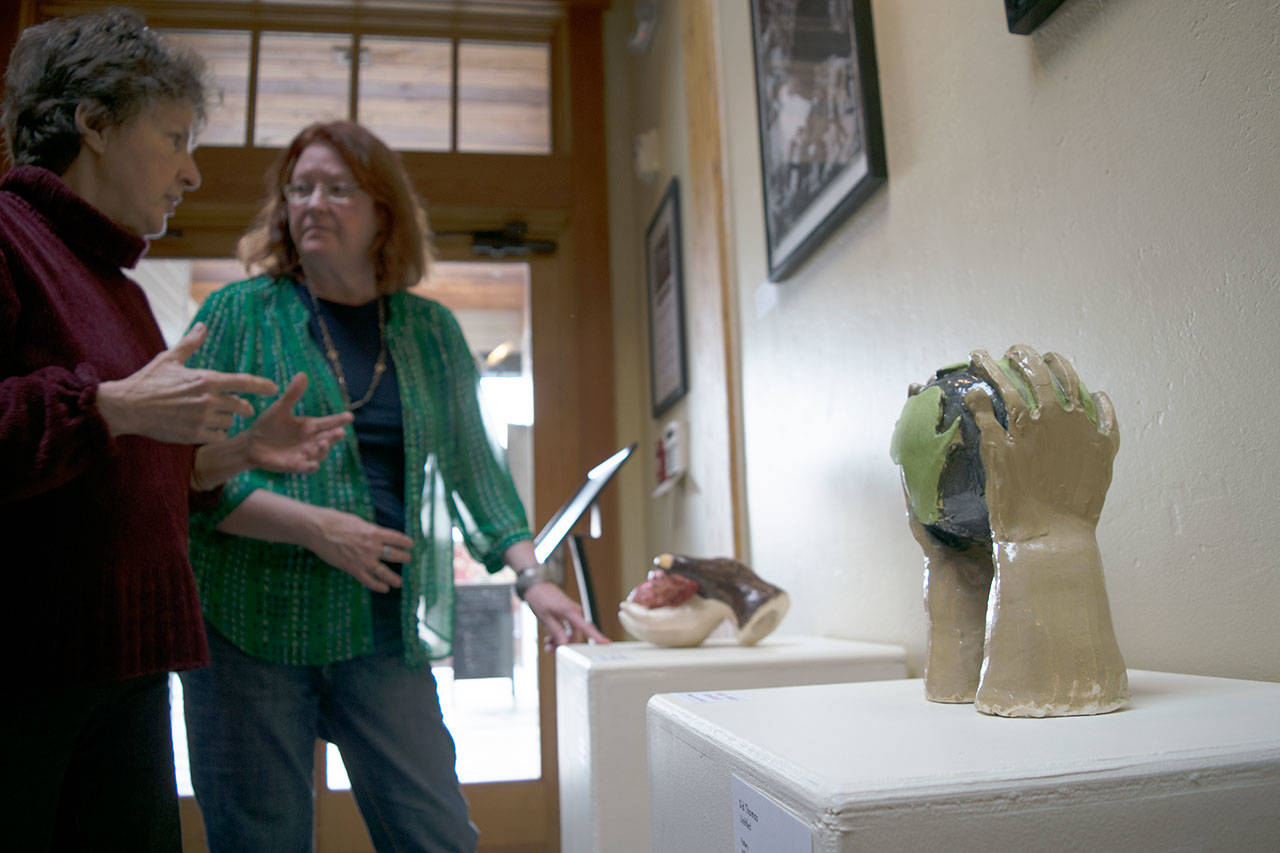It’s common for teenagers to feel as if adults don’t listen to their perspectives or take them seriously due to their age, according to high school student Chloe Hood and community volunteer Julie Glover.
But high school students across Whidbey Island have found a platform to voice their perspectives and begin an open dialogue with their community: art.
The Youth Perspective on Social Justice art show has provided that platform for students from South Whidbey High School and Oak Harbor High School. The exhibit, held in the Bayview Cash Store until May 26, features work from students that touch upon social justice issues ranging from gender inequality to the conversation surrounding the death penalty.
For many of the featured young artists, this was an opportunity for their voices to be heard.
“I think the art show is a great way to include the youth voice in the community,” Hood said. “I feel lucky, because in this community I’ve had a lot of adults help me get my voice out there, and I know a lot of other students feel that way.”
The exhibit came about when Glover, who organized the art show, sought a way to open a dialogue between the youth and adults on divisive, often politicized issues the students were passionate about. She says some adults she spoke with in the community felt out of touch with the youth and had no other way to hear their voices regarding issues such as social justice. Glover coordinated with South Whidbey High School art teacher Sam Mirkovich and Oak Harbor High School art teacher Kayla Sexton to incorporate social justice into their curriculum. The students would then submitted pieces for the chance to win money prizes from Goosefoot.
Both teachers were on board with the idea and set aside classroom time for the exhibit. Mirkovich gave his students free rein over their work, allowing students to submit poetry, drawings, paintings and graphic art. Sexton’s students submitted sculptures.
“I purposefully didn’t give the students much guidance in terms of what topics to cover, it was mostly self-driven,” Mirkovich said. “Their works more or less touched upon their first amendment rights — freedom of speech, freedom of expression, etc. I was open to hearing both sides of any political issue, and I think that’s a good thing.”
Some of the student pieces in the Bayview Cash Store are evocative and could potentially ruffle some feathers. South Whidbey High School student Libby Hawkins, whose work was named the best overall piece by Goosefoot, wrote a poem called “Liberty and Justice!” which questions whether Americans are adhering to the pledge of allegiance. The young poet put special focus on the closing line, “with liberty and justice for all,” editing it to fit who she believes it applies to most in America: rich, white, Christian men.
Glover said the poem was jarring for some of the viewers, some of whom she says may have fit that description.
“I was watching people read that poem, and there was often a moment when they looked like they were caught by surprise and really had to stop and think,” Glover said. “I didn’t see anybody get angry, because I think the older crowd who stopped by the exhibit came into it with an open mind.”
Other topics regularly discussed were racial inequality, multiculturalism and climate change, which students like Hood claim is a social issue, as she says future generations will inherit the earth. While those topics are on the more progressive end of the political spectrum, not all pieces fit under that generalization. Glover said there were also submissions that discussed what is the most humane way to administer the death penalty, as well as the general issue of poverty in America.
Glover’s goal in organizing the event was not only to give Whidbey’s youth a platform through which to express themselves, but also to illustrate that adults have something to learn from young people. She claims youth perspectives are “fresh, pure and unadulterated,” since they’ve had less time to be shaped by others. Glover says many adults can get caught in an echo chamber, especially considering many don’t communicate with youth due to societal norms. She added that some of her older friends are even scared of teenagers since their lives are so different from their own.
High schoolers also tend to have a different world view, Glover said. Both she and Hood agree that the younger generations tend to embody difference and individualism in society rather than uniformity. For Glover, there’s something adults can learn from that divergent perspective.
“I learn from these kids every time I meet with them, and I’m not just trying to be nice,” Glover said. “They have all this information that is really vital to my own understanding of the world. I think an exhibit like this shows the community that we should encourage this sort of dialogue.”


